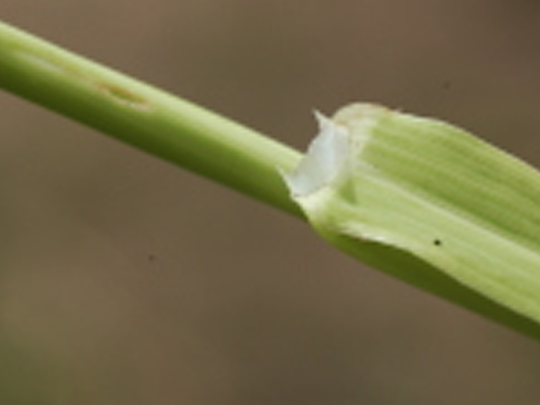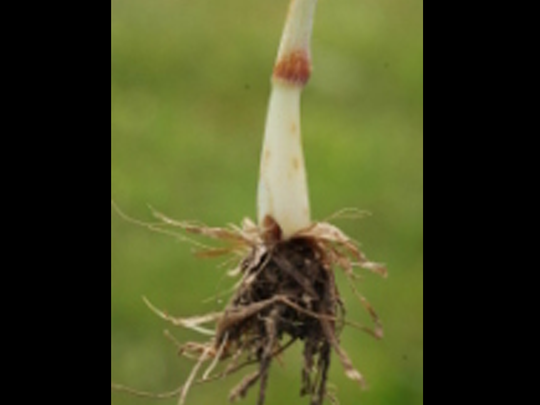Perennial, densely tufted top grass. Height 100–150 cm. Slow early growth, slow regrowth after cutting, producing new flower-bearing stems. Timothy is widespread in fertile, humid, maritime and continental locations and also in low mountain ranges. Very hardy but not drought-resistant. Tolerant of harsh climates. Valuable fodder grass in pastures and meadows. Good supply of nutrients essential. The vigorous top grass provides high yields of quality fodder for cutting and grazing with a high feed value (8). Requires large amounts of fertiliser. Pasture seed mixes always contain timothy. Particularly important in horse pastures and popular as horse hay. In leys it combines with red clover and alfalfa to produce a valuable clover-grass with a high feed value. Small timothy (Phleum bertolonii) has been used as a turf grass, but with limited success.
| Leaf | Leaf rolled in the bud, leaf sheath open and glabrous, often yellowish-green. Bulb-like swelling at base of the stem. Leaf blade 3–9 mm wide and up to 30 cm long, scarcely ribbed and soft. Ligule medium long, elevated in the middle with pointed teeth at either side, no auricles. |
| Culm | Usually erect or weakly geniculate. Culm height 100 cm or more. New culms produced after cutting. |
| Inflorescence | Spike-like panicle, cylindrical and very densely packed. Entire inflorescence 6–7 mm wide, up to 10 cm long and greyish-green in colour. Single-flowered spikelets approx. 3 mm long, anthers yellowish-blue. Glumes longer than lemmas, three-veined with stiff hairs along the keel. Each glume has a 1 mm long horn-like tip, no awns. |
| Fruit | Grain 1.5–2 mm long, virtually ovate. Lemma strongly curved with tip, silver-grey, slightly shiny with short hairs. Caryopses fall easily from the husks and appear brownish, especially when too harshly threshed. TSW approx. 0.3–0.6 g. |

